
Above: A notebook page drawn while visiting the (excellent) Cleveland Museum of Natural History this week.
Below: A notebook page drawn while visiting the (also excellent) Mütter Museum in Philadelphia back in 2012.
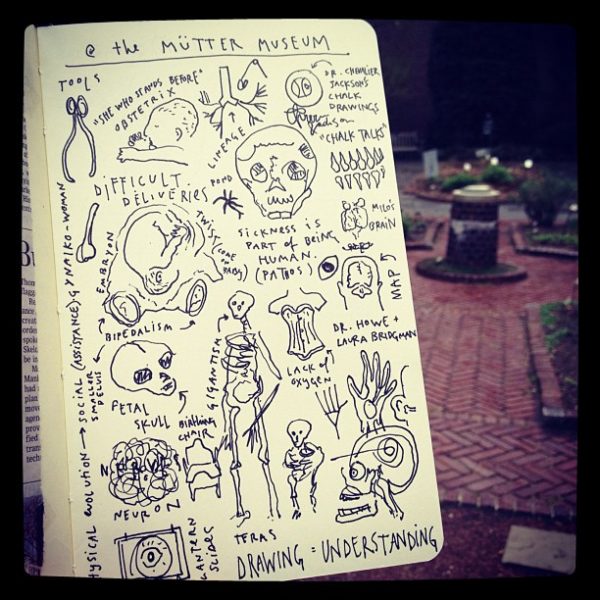

Above: A notebook page drawn while visiting the (excellent) Cleveland Museum of Natural History this week.
Below: A notebook page drawn while visiting the (also excellent) Mütter Museum in Philadelphia back in 2012.

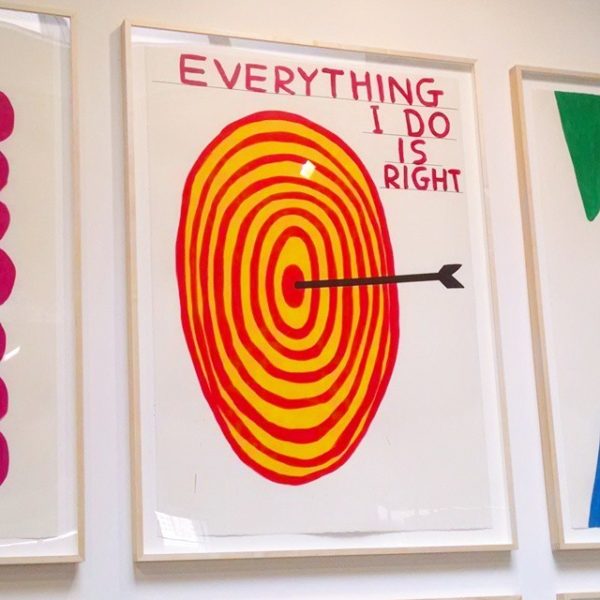
“Talent hits a target no one else can hit; genius hits a target no one else can see.”
—Arthur Schopenhauer
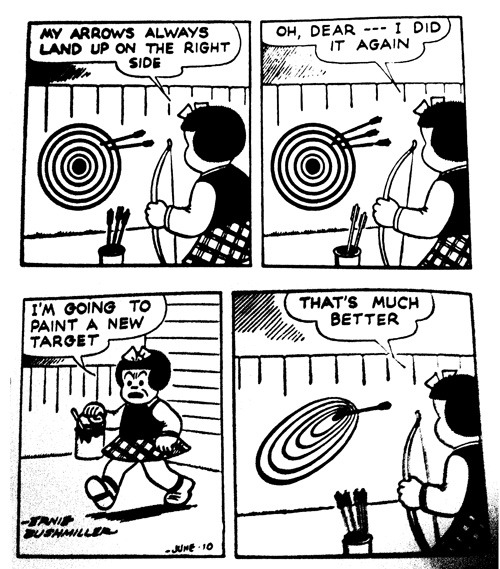
“Instead of shooting arrows at someone else’s target, which I’ve never been very good at, I make my own target around wherever my arrow happens to have landed. You shoot your arrow and then you paint your bulls eye around it, and therefore you have hit the target dead centre.”
—Brian Eno

“In the long run, men hit only what they aim at.”
—Henry David Thoreau
* * *
PS. (2021/03/17):
I took archery in high school because it wasn’t a team sport. I liked some of the team sports, but No one else to blame. I wanted to see what I could do. I learned to aim high. Aim above the target. Aim just there! Relax. Let go. If you aimed right, you hit the bull’s-eye. I saw positive obsession as a way of aiming yourself, your life, at your chosen target. Decide what you want. Aim high. Go for it.
— Octavia Butler, “Positive Obsession,” Bloodchild and Other Stories
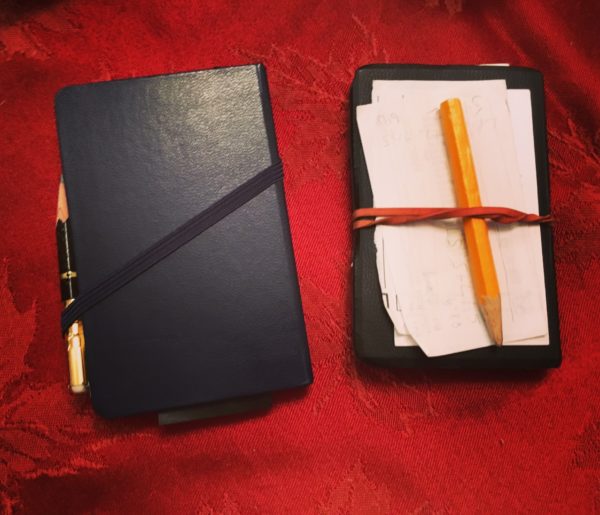
My notebook vs. my father-in-law’s, left out on the kitchen table.
Seeing the two side-by-side reminded me of a few months ago when I was visiting my dad and he pulled out a logbook — I had no idea he kept a notebook:
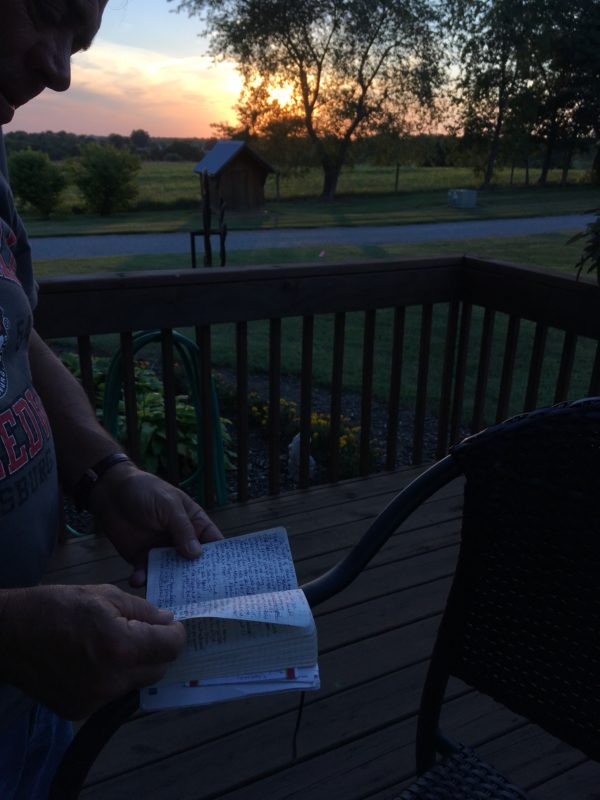

I posted the galley (a galley is an advance reading copy for booksellers and reviewers) of Keep Going on my Instagram a few days ago, and a lot of people said, “April?!? That’s 5 months from now! What the heck takes so long?”
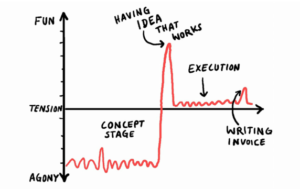
A year from sale to pub date is actually pretty danged fast by the standards of the publishing industry. (For example, I signed the contract for my first book in summer of 2008 and it wasn’t published until the fall of 2010.) What’s unusual is for us to be so far ahead in the process by now. We really cranked on this one.
In the spirit of showing my work, here’s a timeline to give you an idea of how quickly (and how slowly) this book happened:
– March 6, 2014: Show Your Work! is published.
– 2014-2018: My wife has our second son, I publish the journal, then angst for a few years over whether I’ll actually ever write another book again.
– 2016-2018: Country descends into political chaos and I — and almost everybody I know — become depressed and distracted.
– January 2017: Start a daily diary.
– October 1, 2017: Start daily blogging again.
– February 14, 2018: Start working on a new talk about staying creative in chaotic times.
– March 9: Give the talk, hand my literary agent a rough outline of a book proposal.
– April 2: After much angst and work, finish book proposal, my agent submits it to my editor.
– April 10: Publisher buys book.
– May 14: Submit first draft to editor.
– June 13: Submit full manuscript and illustrations to editor.
– July – August: Proof, edit, revise various passes, work up all the extra stuff that goes in the book. (Back matter, lettering, etc.)
– September: Finish proofing, nail down cover and jacket copy.
– A few days ago: Bound galleys arrive.
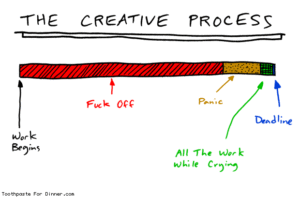
– Two days ago: Editor proofing “the blues” — printouts from the printer — I suggest a couple of last-minute changes.
– Now – April 2: Publisher must get a 100,000+ books printed and distributed, publicist has to plan 25-city tour, sales team has to reach out to booksellers, retailers, etc., and a ton of other work that I don’t even see has to happen. I must remain calm during “The Gulp,” and try to find something new to work on, while not annoying y’all with news of a book that isn’t out yet. (Also: The world needs to not explode.)

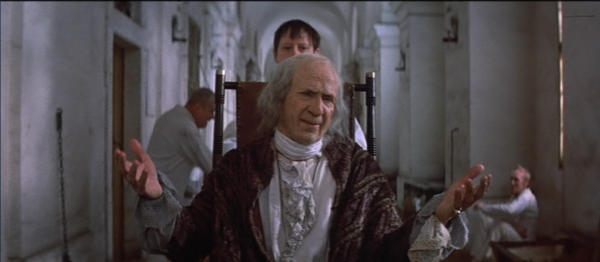
Tim Wu, author of The Attention Merchants, writes about the slow disappearance of hobbies and amateur pursuits, and finds, in their absence, a void of freedom:
The promise of our civilization, the point of all our labor and technological progress, is to free us from the struggle for survival and to make room for higher pursuits. But demanding excellence in all that we do can undermine that; it can threaten and even destroy freedom. It steals from us one of life’s greatest rewards — the simple pleasure of doing something you merely, but truly, enjoy.
See also: “Knitting at the end of the world” and “In praise of the good old-fashioned hobby.”
This site participates in the Amazon Affiliates program, the proceeds of which keep it free for anyone to read.